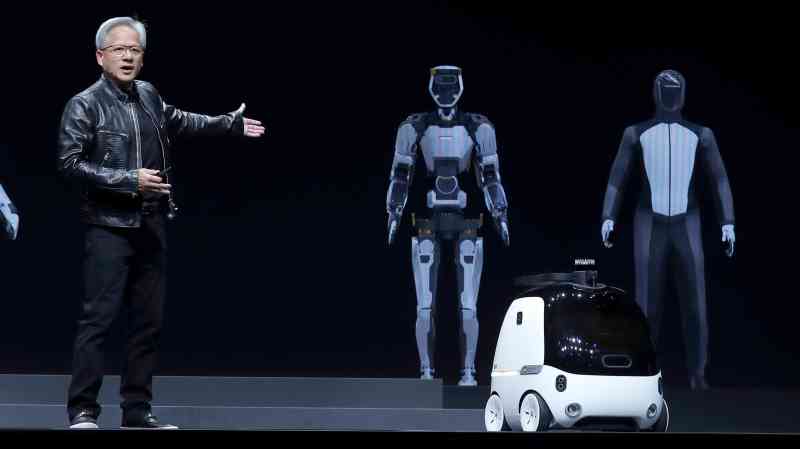Nvidia boss hurries out new serving of chips to hungry market
Nvidia has revealed its latest suite of artificial intelligence products, saying it is on an “accelerated road map” for new launches.
Addressing the Computex conference in Taipei, Jensen Huang, Nvidia’s founder and chief executive, said the company would release a next-generation processor platform called Rubin. His comments came less than three months after the announcement of Blackwell in March.
Little was divulged about the “secret” platform, although Huang, 61, said: “All of these chips I’m showing you here are all in full development.” He also declared that “the next industrial revolution has begun. Companies and countries are partnering with Nvidia to shift the trillion-dollar traditional data centres to accelerated computing and build a new type of data centre — AI factories — to produce a new commodity, artificial intelligence.”
Nvidia’s share price has surged by 178 per cent in the past year because of insatiable global demand for its power graphics processing units, which are banded together in racks housed in data centres and are used to train and power AI.
Running through its new range of products and services, Huang’s presentation further set out Nvidia’s plans to continue to dominate the space, with the technology tycoon hailing the company’s relationships with leading AI companies, including Google and Hugging Face.
Among demonstrations at the event, he said the company was creating a digital twin of Earth, called Earth2, to “simulate” the planet to better understand climate change and natural disasters, such as Taiwan’s recent earthquake. Huang also showcased AI models that “reproduce lifelike experience” and can mirror how light penetrates the skin.
Nvidia has a market value of about $2.7 trillion, snapping at the heels of Apple and Microsoft for the title of the world’s most valuable business. It has been a key driver in the rise in America’s S&P 500 share index, which is weighted by stock market values.
Its financial results repeatedly surpass Wall Street analysts’ expectations. In its latest quarterly figures published in May, Nvidia revealed that its sales had leapt by 262 per cent to $26 billion. Most of this came from its data centre division, where its high-specification processors are in the highest demand. Sales here were up 427 per cent from the year before at $22.6 billion.
The New York-listed computer processing business was founded in 1993 and today employs more than 28,000 people. Its GPUs originally were used to power computer game graphics until scientists realised that they could be effectively applied to AI infrastructure. While other companies are working on developing challenger chips, none appears to have yet succeeded in knocking Nvidia off its perch as the market leader.




Post Comment